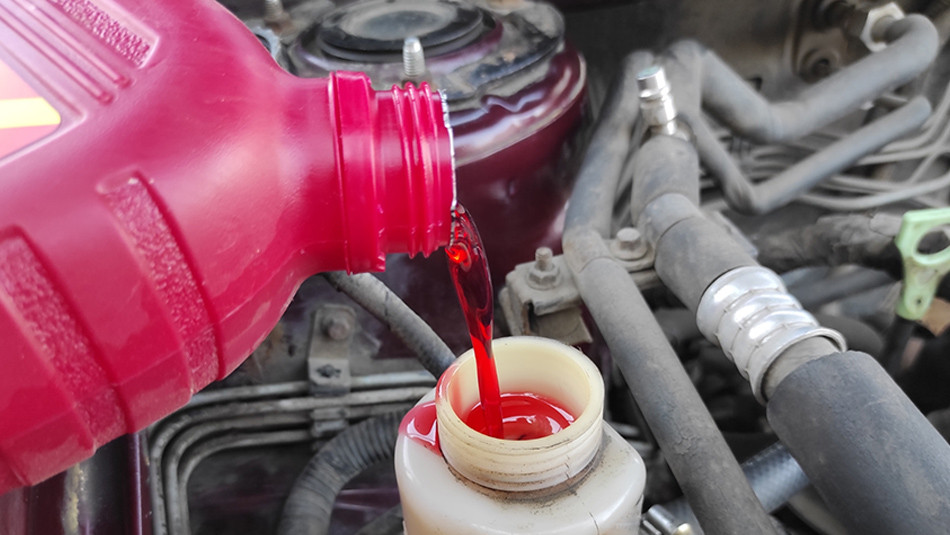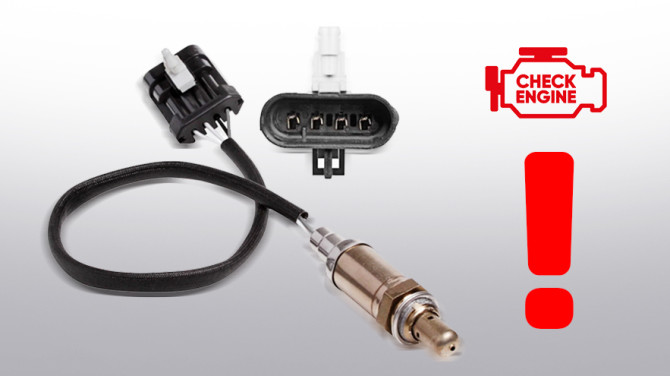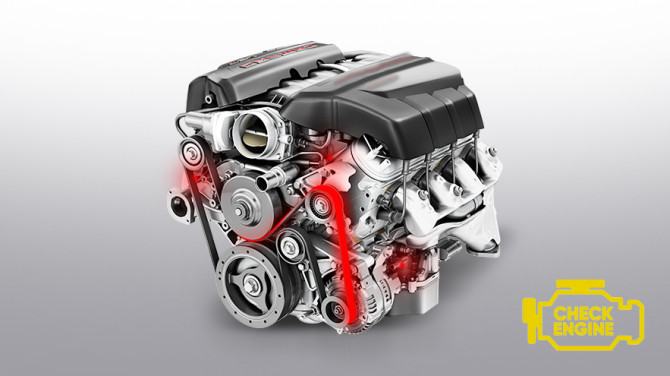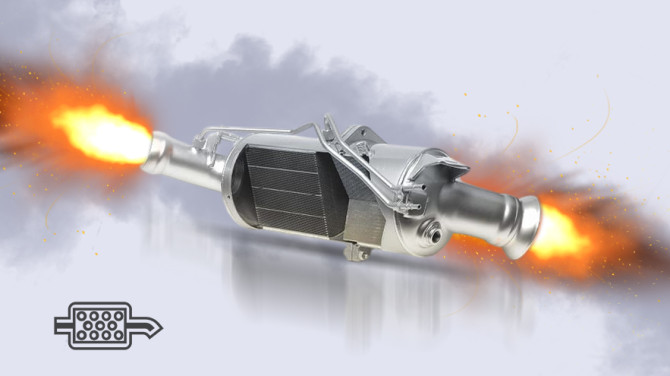Power steering fluids: how to choose and how to replace them correctly

Choosing the right fluid for your power steering system is critical to the longevity and reliability of your vehicle. Car owners often ask themselves which fluid is best for their power steering, when it should be replaced, and whether different types of fluids can be mixed.
Read our article to learn how to avoid these mistakes, choose the right fluid, and replace it in a timely manner.
What does power steering fluid do?
Power steering fluid transfers force from the steering wheel to the steering mechanism, helping the driver turn the wheels more easily. It also lubricates the system components, preventing wear, and dissipates the heat generated during operation of the power steering system.
Reasons for deterioration of hydraulic fluid quality in a power steering system
In most cars, the service life of the entire steering system with hydraulic power steering is approximately equal to the service life of the entire car, provided that the system is serviced and any malfunctions are repaired in a timely manner, which usually primarily concern the quantity and quality of the fluid. Technical experts cite four main reasons for fluid deterioration:
- Aging and oxidation of the fluid under the influence of high temperatures
- Dirt, dust, or metal shavings that enter the line through worn seals and/or friction wear
- Moisture that enters the system and causes corrosion
- Exceeding the fluid service life
When to replace the fluid in the booster
- If the fluid has darkened and/or has impurities (flakes, emulsion) or an unpleasant odor
- If there are unusual noises in the steering
- If there is difficulty turning the steering wheel
- Every 40,000–60,000 km or once every 2–3 years, depending on the manufacturer's recommendations
How to choose a fluid for the power steering
It is important to use the correct type of fluid in accordance with the car manufacturer's recommendations to ensure the proper functioning of the power steering system.
Types and differences
The classification of fluids for power steering is similar to other lubricants and depends on the base of the oil. There are three main groups:
- Mineral. These include purified petroleum fractions with additives to improve the working properties of the oil. The main advantage of mineral fluids, apart from their price, is that they do not aggressively affect the rubber components of the system. However, they have a short service life and are prone to foaming.
- Semi-synthetic. Their composition includes both mineral and synthetic substances. Their advantages are low viscosity, resistance to foaming, and good lubricating ability. However, semi-synthetic fluids affect the rubber elements of the power steering system.
- Synthetic. Their composition mainly includes polyhydric alcohols, complex polyesters, and a small amount of partially refined petroleum. To reduce the destructive effect on rubber seals, special additives are used, which are added to the composition of synthetic oils. Synthetic oils, although more expensive, have excellent performance characteristics: they are resistant to foaming, can operate at extreme temperatures, and have a long service life.
The following types can be used as working fluids in hydraulic power steering systems:
- ATF (Automatic Transmission Fluid) – transmission fluid, often used as a fluid for steering systems
- Specialized hydraulic fluids – designed specifically for power steering systems, with better lubricating and temperature properties
- Synthetic fluids – have a wider temperature range and longer service life
Hydraulic fluid for power steering is classified not only by composition and characteristics, but also by color.
The most common are:
- Red. Manufactured to GM Automotive Group standards and also known as Dexron. They are manufactured by the company itself, as well as by licensed manufacturers. These fluids are used in TOYOTA, KIA, MAZDA, and GM vehicles.
- Yellow. Mostly intended for Mercedes-Benz vehicles. They are designed by Daimler but manufactured by other licensed manufacturers.
- Green. Manufactured by the German company Pentosin. Used mainly in Volkswagen, Ford, Bentley, BMW, and Volvo vehicles, as well as in Daimler Group cars.
However, no car manufacturer uses dark brown or black power steering fluids — this is a sign of component wear and the need to replace the fluid.
Replacing the oil in the power steering system yourself
Replacing the oil in the power steering system is not difficult and can be done by most car owners with basic mechanical skills and the right tools. Here is a step-by-step guide on how to replace the power steering fluid:
- Prepare the new fluid (follow the car manufacturer's recommendations on which oil is suitable for the power steering system).
- Raise the front of the car using a jack and secure it firmly to prevent accidents.
- Drain the old fluid from the power steering reservoir using a syringe or a special pump.
- Disconnect the return hose and let the fluid drain out
- Flush the system by pouring in a little new fluid and turning the steering wheel several times from lock to lock
- Reconnect the hose and fill with new fluid to the required level
- Start the engine and turn the steering wheel left and right to remove any air
When no more air bubbles come out, close the power steering reservoir with the cap – it is now ready for use. To achieve a reliable result on cars with mechanical power steering (not equipped with electric pumps), it is advisable to increase the engine speed to 1500-2000 when turning the steering wheel. Therefore, it is more convenient to carry out the power steering fluid replacement procedure with an assistant.
Can power steering fluid be mixed?
A common question is whether power steering fluid can be mixed. The answer is that it is best to avoid mixing different types and brands of fluid. This can lead to changes in viscosity, loss of lubricating properties, or even damage to seals. Always follow the manufacturer's recommendations.
Another thing is emergency situations when you urgently need to add power steering fluid to the required level. For example, if a leak is detected on the road. But even in this case, you cannot mix fluids with different bases, such as mineral and synthetic. In this case, it is better, if possible, to purchase a universal fluid for refilling only, and replace all the oil in the circuit as soon as possible, after flushing it first.
It is strictly forbidden to add other fluids to the power steering reservoir: engine oil, antifreeze, brake fluid, or water. This can seriously affect the performance of the pump or damage the seals. If it is not possible to add the correct and high-quality lubricant to the power steering system, it is permissible to switch it off for a short time – otherwise the pump may fail by “sucking” air.
To do this, remove the terminal or fuse responsible for the electric pump. It is more complicated with a mechanical pump (one that has a belt drive from the internal combustion engine). Here you need to remove the drive belt from both pulleys—the pump and the crankshaft. In addition to requiring certain skills and wrenches, in modern cars the situation is often complicated by the fact that one belt drives several pieces of equipment. In particular, those that are critical while driving, such as the electric generator. Therefore, although this method works, it is not always applicable.
How to check the power steering fluid level
The power steering expansion tank is located under the hood of the car, usually above the power steering pump. There is a symbol or sticker with a steering wheel image on the cover. To check the oil level, follow these steps:
- Turn off the engine and wait 1-2 minutes for the fluid to drain
- Open the reservoir and check the level against the “MIN” and “MAX” marks on the dipstick or the reservoir walls
- Add the recommended fluid if necessary
Negligence when replacing the power steering fluid
Ignoring or incorrectly replacing the fluid can lead to:
- Damage to the power steering pump and steering mechanism
- Reduced steering assistance
- Increased repair costs in the future
Let's summarize. Only buy high-quality power steering fluid, always pay attention to the technical specifications of your car, and do not neglect the recommendations for replacing the fluid. Compliance with the recommended rules will ensure long and reliable operation of the power steering mechanism. However, in case of serious problems, seek professional help – preferably from STS in Warsaw.







